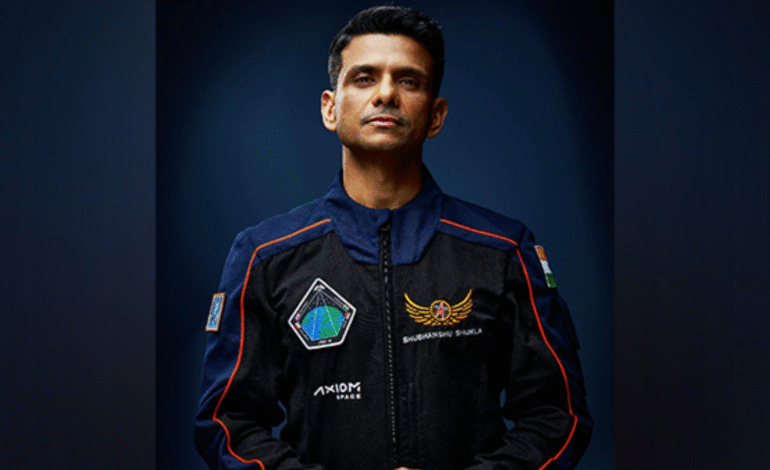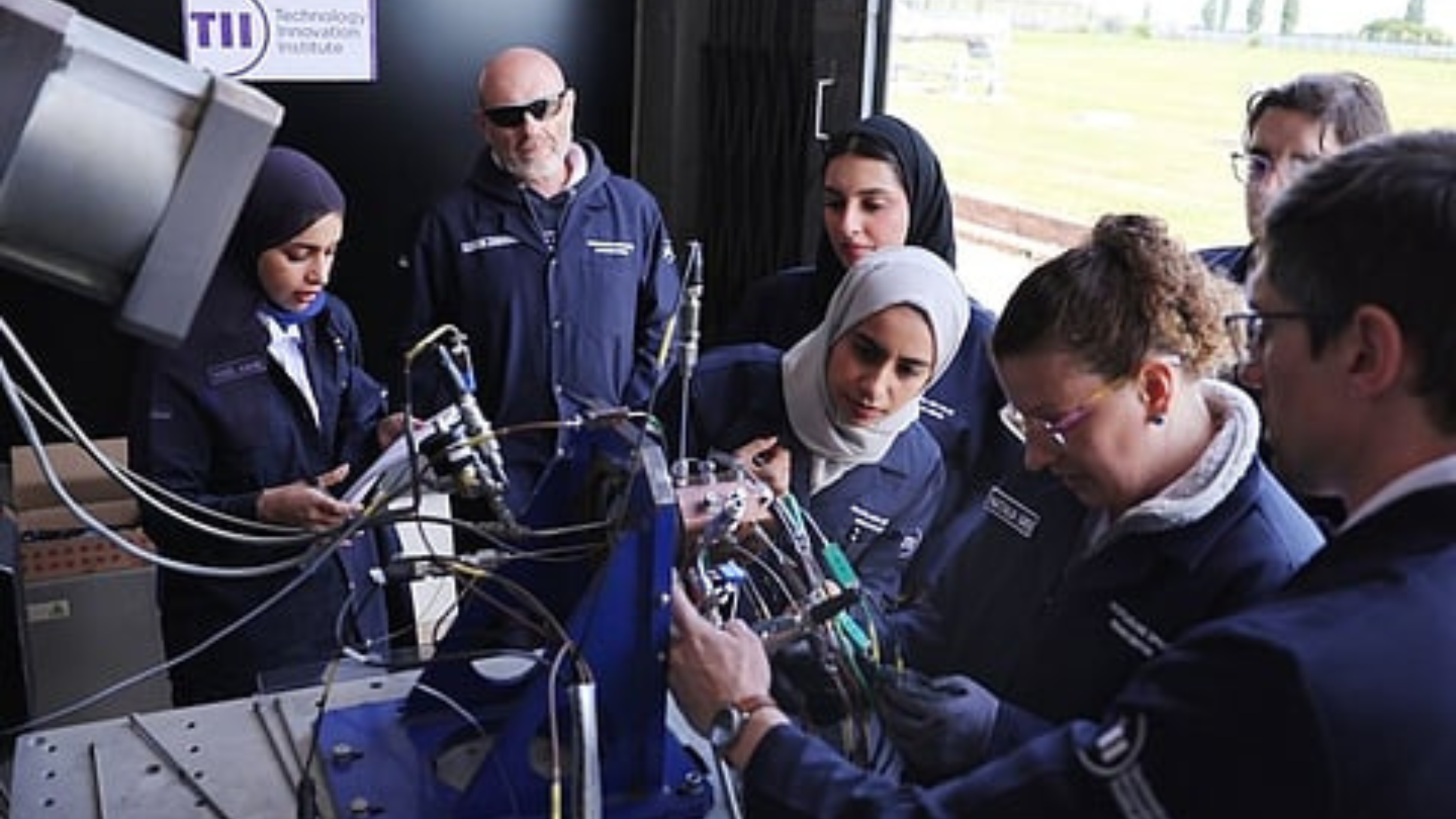Shubhanshu Shukla Tests Thought-Control Technology in Space Mission

In a historic step forward for space exploration, Group Captain Shubhanshu Shukla India’s latest space ambassador is leading a revolutionary experiment aboard the International Space Station (ISS). Working closely with fellow astronaut Sawosz Uznanski-Wisniewski in the Columbus laboratory module, Shukla is testing a next-generation brain-computer interface (BCI) called Cortivision firs.
This advanced device uses near-infrared light to detect brain activity, enabling astronauts to interact with computers using only their thoughts despite the zero-gravity environment of space. The initiative, called PhotonGrav, or “Thoughts over Gravity,” aims to reshape how spacefarers communicate and operate equipment beyond Earth.
Reimagining Astronaut Interaction: The Vision of PhotonGrav
The PhotonGrav experiment is a pioneering effort to study how BCI systems perform in space. The Cortivision fNIRS system maps brain activity in critical cognitive areas such as the dorsolateral prefrontal cortex (DLPFC) and middle frontal gyrus (MFG), responsible for focus, memory, and decision-making.
Shukla is responsible for calibrating the system to optimize signal clarity. Meanwhile, Wisniewski dons a specially designed cap that transmits his brain signals via Bluetooth to a laptop. Their joint objective: to test if astronauts can control technology with pure thought, despite the unusual challenges of microgravity.
To further enhance accuracy, the experiment integrates accelerometers and gyroscopes to detect motion artifacts distortions that microgravity often causes in brain signal readings. These safeguards are crucial to ensure reliable performance for future space missions, where precision and seamless control are vital.
Why PhotonGrav Matters: Future of Space Missions
Beyond its technical brilliance, PhotonGrav represents a bold leap in astronaut-computer interaction. Imagine a future where astronauts control robotic arms, navigate spacecraft, or communicate with mission control simply by thinking. That’s the future this research is trying to unlock.
Such breakthroughs could transform how space crews manage complex tasks, especially during long-term missions to the Moon, Mars, or deep space where mental focus and low-effort operations are essential.
Shukla’s Multidisciplinary Mission on the ISS
Group Captain Shukla’s contribution to the ISS goes well beyond one experiment. Over his 14-day mission, he is leading seven Indian scientific studies that reflect India’s growing presence in global space research.
Among these is a study on muscle stem cell behavior in microgravity. By observing these cells under a microscope, Shukla is helping scientists understand how muscle tissue repairs itself in space a major step in countering muscle atrophy, a common problem during long-duration missions.
He’s also part of the Astronaut Mental Health study, capturing video footage of daily activities aboard the ISS. These recordings help researchers assess the psychological impact of space travel, adding a human layer to scientific data.
Inspiring Youth: Education and Outreach from Orbit
Shukla has gone a step further to engage with young minds. In one special video, he explains how the human digestive system functions in zero gravity. His message is aimed directly at students especially in India, the UAE, and across the Middle East who are increasingly inspired by science and space exploration.
By turning complex space phenomena into accessible content, Shukla is helping shape the next generation of scientists, engineers, and innovators.
Global Collaboration: Aboard the ISS with Shared Goals
While Shukla leads the PhotonGrav initiative, astronauts from different nations are pushing the boundaries of biomedical and space tech research on the ISS.
Peggy Whitson, veteran astronaut and commander of the Axiom-4 mission, is supporting experiments in the Tranquillity module, focusing on issues such as blood clot prevention and visual processing changes in microgravity.
This collective effort shows how international collaboration continues to drive innovation, making the ISS a truly global research hub.
Cortivision fNIRS: A Leap in Neurotechnology
At the center of Shukla’s experiment lies the Cortivision fNIRS system. Designed to read real-time brain activity, it opens the door to hands-free operations in space. In microgravity, where using hands can be cumbersome or imprecise, the potential for thought-based control systems is enormous.
Such a system could allow astronauts to operate tools, navigate systems, or communicate without physical contact. This reduces cognitive and physical strain while boosting operational efficiency.
Opportunities for the UAE and the Middle East
The UAE is already making waves in space. From Hazza Al Mansoori’s historic mission to the Hope Probe to Mars, the Emirates are investing heavily in scientific research and space innovation.
Experiments like PhotonGrav align closely with the UAE’s long-term vision. They provide a blueprint for the kind of advanced technologies Emirati scientists and engineers might soon work on. The Mohammed Bin Rashid Space Centre (MBRSC), for example, can draw inspiration from India’s approach and initiate similar BCI trials in future missions.
For neighboring nations like Saudi Arabia and Qatar, this also signals the growing potential for regional partnerships in fields like neurotechnology, astronaut training, and STEM education.
Tackling Microgravity Challenges: Making BCI Work in Space
One of the main goals of PhotonGrav is to address how microgravity affects the accuracy of brain signal collection. Since astronauts float and move differently in zero gravity, their brain signals can easily get distorted by motion.
To counter this, Shukla and his team are using motion sensors to filter out noisy data, ensuring that the system remains robust and consistent.
They are also testing the usability and ergonomics of the system. Is it intuitive enough for astronauts working under pressure? Can it be deployed easily during emergencies? These real-world feedback points are critical to making the technology viable.
Beyond Space: The Wider Applications of BCI Technology
The implications of this study stretch far beyond the ISS. On Earth, BCI technology could transform healthcare and rehabilitation, helping people with paralysis control prosthetic limbs or communication devices through their thoughts.
In the UAE and Middle East, where innovation ecosystems are rapidly growing, this could give rise to startups, medical research hubs, and tech ventures focused on brain-controlled system both for space and everyday life.
India’s Space Legacy Grows Stronger
Group Captain Shubhanshu Shukla’s mission adds a new chapter to India’s space legacy. From Chandrayaan-3 to the Aditya-L1 solar mission, India has established itself as a major player in space science. Shukla’s research aboard the ISS cements that reputation.
India’s ability to contribute complex scientific experiments to global missions reflects its readiness to lead collaborative, future-driven space initiatives.
Fostering Tomorrow’s Innovators in the Middle East
Shukla’s educational outreach, especially his student-focused videos, connects directly with youth across the Middle East. In the UAE, government-led STEM efforts such as the Emirates Schools Establishment are nurturing a new generation of scientists.
By showcasing Indian innovation and explaining the science in real-world terms, Shukla becomes a relatable figure who inspires dreams in classrooms from Dubai to Delhi.
Thoughts That Shape the Future
The PhotonGrav experiment, led by Indian astronaut Group Captain Shubhanshu Shukla, marks a revolutionary step in how humans may control technology in space. By testing the Cortivision fNIRS brain-computer interface, this mission not only advances scientific understanding but also redefines what’s possible both in orbit and on Earth.
For nations like the UAE and its Middle Eastern neighbors, it’s a call to accelerate innovation, deepen partnerships, and inspire young minds to reach for the stars.








1 Comment
[…] space history is poised to reach new heights this week as Group Captain Shubhanshu Shukla, the first Indian astronaut to board the International Space Station (ISS), prepares to return to […]
Comments are closed.